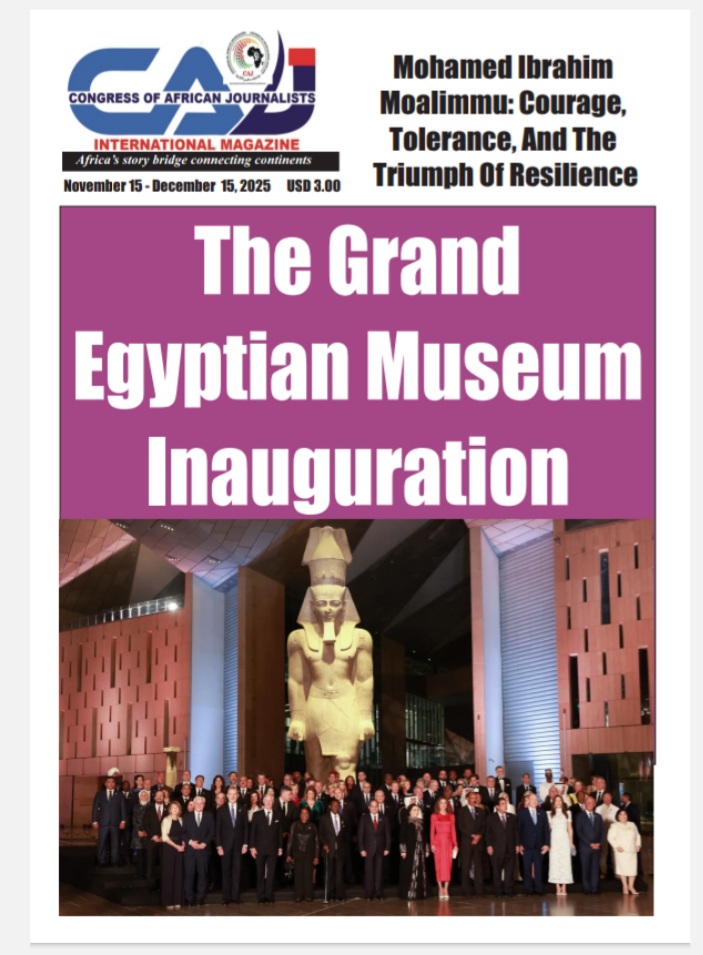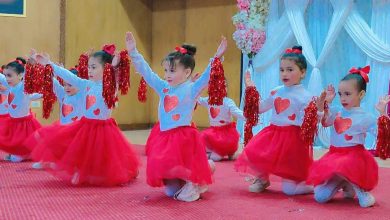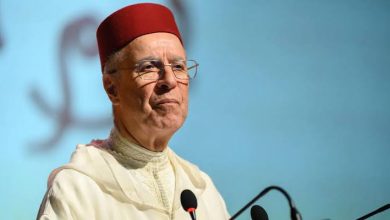
The November 2025 issue of CAJ International Magazine unfolds as a symphony of voices — from the grandeur of civilizations reborn to the quiet persistence of those who serve truth, art, and humanity under the most trying conditions.
Our cover story, “Egypt Speaks for Herself: The Grand Egyptian Museum Inauguration,” by Fatima Al-Zahraa Hassan, celebrates a milestone not only for Egypt but for global heritage. The opening of the Grand Egyptian Museum — attended by kings, princes, and presidents from nearly eighty nations — stands as a testament to Egypt’s timeless identity and its living civilization. Beneath the lights of Giza, the Egyptian people reminded the world that history’s heart still beats on the Nile.

From monuments to media, Ashraf Aboul-Yazid examines the shifting foundations of journalism in “Between the Fourth Estate and Digital Chaos.” He revisits Edmund Burke’s vision of the press as the “Fourth Estate,” contrasting it with today’s digital landscape where truth often dissolves in the flood of unchecked voices. Yet within that chaos lies a paradoxical freedom: citizens reclaiming their power to inform — even as they risk blurring the lines between fact and fabrication.
The issue also brings sharp global realities.
Oseni Yusuf Salami’s report, “US Threatens Military Action Against Nigeria Over Christian Persecution Claims,” captures the tension of international diplomacy where religion, politics, and foreign policy collide.
Meanwhile, Dela Ahiawor’s essay on private jet travel confronts the moral cost of luxury. As elites chase the “soft life” of exclusivity, the skies themselves grow heavier with pollution — a sobering metaphor for privilege in an age that demands environmental accountability.
In the arts, Kamal Hashim introduces readers to Sudanese painter Muneim Abdullah Hamza, whose canvases blend dream and reality in luminous harmony. Hamza’s philosophy — that art is as vital as food or education — elevates creativity into an act of social justice. His layered imagery reconstructs Sudan’s collective memory through color, symbol, and movement.
Across the Mediterranean, poetry’s pulse resounded in Greece. Our Festival Report from Naoussa recounts the 4th International Poetry Festival, where poets from thirteen nations gathered under the theme “Aristotle and the World.” It was a celebration not only of verse but of the enduring dialogue between wisdom and wonder.
That same spirit of unity animates Misna Chanu’s Book Review of the anthology “Beyond the Language.” In seven languages, poets affirm that laughter and sorrow transcend words — and that translation, far from being a mere tool, is the heartbeat that keeps poetry alive across borders.
Finally, Mohamed Ibrahim Moalimuu’s extraordinary life story reminds us of journalism’s moral core. A survivor of bombings and loss, he remains steadfast in Somalia — a living symbol of courage, patience, and the conviction that truth must be told by those who live it.
In “The White Volga and the Heat of Africa,” Russian writer Inna Nacharova intertwines personal memory with forgotten history, recalling the Soviet engineers who worked on Nigeria’s first pipeline projects between 1977 and 1982. Her story moves from intimate childhood impressions — the gleam of white Volga cars brought home by her father’s colleagues — to the broader narrative of Cold War–era cooperation. The article revives a little-known chapter of Soviet–Nigerian energy partnership that built both infrastructure and human bridges. Beyond the pipelines, Nacharova evokes cultural warmth, technical exchange, and enduring memories that linked Siberian frost with African heat.
In this issue, CAJ Magazine bridges civilizations, exposes contradictions, and honors resilience. From Egypt’s museums to Sudan’s art, from digital media to global poetry, the message resounds clear: even in chaos, humanity continues to speak — with courage, color, and conscience.




